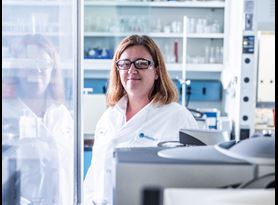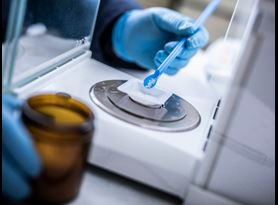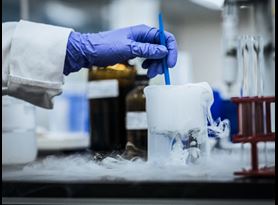EPA’s Safer Choice Standard: Advancing Environmental Protection through Safer Products
The roots of the US Environmental Protection Agency’s (EPA’s) Safer Choice program, which has been in existence since 2015, go back to the early 1990s with the Design for the Environment (DfE) program.
The goal of the Safer Choice program is to prevent pollution as well as the promotion of green chemistry alternatives through what the EPA classifies as “informed substitution,” which will ultimately reduce risk to people and the environment. As it pertains to the Safeer Choice program, “informed substitution” is the transition from a chemical of particular concern to safer chemicals or non-chemical alternatives. For alternative raw materials and chemicals to achieve Safer Choice designation, as many of the following criteria as possible should be met:
- Technically feasible;
- Provide an improved profile for health and the environment;
- Account for social considerations, and/or
- Have the potential to result in lasting change.
Safer Choice informed substitutions for product formulations
Safer Choice functional use classes
Each ingredient found within a product have been categorized into distinct functional use classes within the Safer Choice standard. These functional use classes include:
- Surfactants;
- Solvents;
- Chelating and sequestering agents;
- Rheology modifiers;
- Plasticizers;
- Ingredients that are commonly protected as trade secrets;
- Fragrances;
- Preservatives;
- Colorants, and
- Processing aids and additives, etc.
The toxicity and fate profiles are then compared within the Safer Choice standard to identify the safest possible ingredients. Safer Choice recognition can be achieved when the safest possible ingredients are used to formulate a high-performing product. Furthermore, whole product characteristics are considered within the Safer Choice program. These whole product characteristics include possible negative synergies between the pH level and ingredients within a product, in addition to several product lifecycle factors. Product lifecycle factors consist of energy efficiency and water savings.
Manufacturers and organizations looking to formulate safer products that meet the standards set forth in the Safer Choice program should reference the EPA’s published Criteria for Safer Chemical Ingredients document.
The role of experienced formulators in developing Safer Choice products
To achieve a finished product that meets Safer Choice standards, selecting an experienced formulator or team of formulation chemists to partner with is critical. Formulators understand how to optimize a product formulation for both health and environmental performance, all while meeting critical functional requirements. Are you looking to modify an existing product or product line to meet Safer Choice standards? Element’s team of formulators have decades of proven success and experience innovating and modifying existing products to meet green chemistry standards, including the standards set forth in EPA’s Safer Choice program. Get in touch with an expert today.
Safer Choice product review process
Safer Choice product attributes
Ingredients that pose the least concern to health and environment in their product classes are the only ingredients included in Safer Choice products. For instance, if a product contains a surfactant, the surfactant within the Safer Choice product must be biodegradable with non-polluting degradation products and cannot be toxic to humans. In contrast, surfactants used in “conventional” products either biodegrade slowly or produce more toxic and persistent compounds which threaten aquatic wildlife as they biodegrade.
EPA’s approach to reviewing Safer Choice products
The reviews of Safer Choice products are in-depth and rigorous. The process begins with a review of established information for each chemical ingredient, including how the ingredient functions within the product, as well as how each individual chemical within the formulation affects living things. If there are outstanding questions or if more information is required, the EPA will then examine the chemical structure of the ingredient(s) in question. This process allows the Environmental Protection Agency to better understand how the material could potentially impact both the environment and consumers. The EPA states that the Safer Choice review process:
- Uses its expert knowledge and predictive tools to supplement lists of chemicals of concern;
- Spots negative synergies between product components;
- Screens all ingredients for chemicals that may present serious health or environmental effects, and
- Recommends safer substitutes for chemicals of concern.
Understanding EPA’s Safer Choice product label
The purpose of the Safer Choice label
The US Environmental Protection Agency recognizes that it should not be challenging for consumers to identify and have access to products that are safer for themselves, their families, and the environment. Thus, the inclusion of the EPA’s Safer Choice label on product packaging allows consumers to quickly, easily, and visually identify high-quality, high-performing products that contain safer chemical ingredients.
The history of the Safer Choice label
As the DfE program evolved to the Safer Choice program in 2015, the DfE Safer Product label became the Safer Choice label, along with a modernized look, with the intention of helping consumers to easily recognize products that meet the Safer Product standards. The Safer Choice label provides a few distinct designations based upon either the intended use of the product or specific criteria, including:
- Products for use in businesses, office buildings, sports venues, and schools;
- Industrial and institutional products, and
- Fragrance-free products.
Choosing the right partner to formulate Safer Choice products
For many, partnering with a contract development and manufacturing organization (CDMO) is the right choice to modify an existing product or product line, or to create a new, innovative product that meets EPA’s Safer Choice product standard. Element’s team of expert formulators have decades of experience modifying existing products and creating new and innovative products that meet green and eco-friendly regulatory standards, including those set forth in EPA’s Safer Choice program.
Find related Resources
Learn more

Green & Eco-Friendly Product Development
Element experts provide best-in-class green and eco-friendly product development services.

Product Formulation
Learn more about how to approach product development from Element's industry-leading teams of knowledgeable, consultative formulation scientists.

Product Development
Element's leading product development labs have a track record of success innovating, optimizing and formulating products for various industries and applications.
Sign Up for Free Resources
Visit Element's email subscription center to receive the latest industry news, technical whitepapers, case studies, webinars, and upcoming events.
